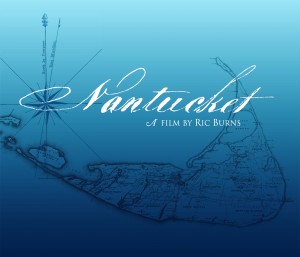Nantucket Is Ready for Its Close-Up
 Few would argue that Nantucket should be one of the most cinematic places on Earth. But only now does that lovely, mysterious, historic, and presently posh Gray Lady off the Cape Cod coast have a documentary to call its own, which premieres in grand fashion on the island this weekend.
Few would argue that Nantucket should be one of the most cinematic places on Earth. But only now does that lovely, mysterious, historic, and presently posh Gray Lady off the Cape Cod coast have a documentary to call its own, which premieres in grand fashion on the island this weekend.
As befitting a community where old Quaker blood runs deeper than Atlantic seafaring lanes, the film has quite a pedigree of its own: the director is Ric Burns, brother of fellow filmmaker Ken and the man who has brought us several American Experience episodes on PBS.
“I find places that have been the zones of collective experience very compelling,” says Burns. “… When you come across a place like Nantucket, you can feel a certain combination of geography, demography, and culture that creates its own irreducible character. Other cities like New Bedford have a rich whaling history, but when you fly into or take the ferry to this little island place … there’s only one Nantucket.”
How Burns came across the subject is curious, considering that he’s been “a Vineyard guy” since 1967, where he rents a place by Tisbury Great Pond. But a few years back, Burns and his production company, Steeplechase Films, signed on to produce an American Experience episode on the whaling industry, called Into the Deep. Accompanied by his wife (and producer), Bonnie Lafave, Burns got his first-ever firsthand glimpse of Nantucket in November 2006 and immediately found the place magical. When he met with the Nantucket Historical Association while researching Into the Deep (which aired May 2010), they agreed to partner on another project: a historical documentary to be screened at the NHA, which would cover Nantucket’s life from its rise from the ocean 5,000 years ago to present day. They’ve been going back to Nantucket for the past four years to work on these films.
Burns says he was attracted to many elements of the island’s story and how they coalesced into one grand narrative: how this sand spit was geologically one of the last land masses to appear and will be one of the first to disappear; how the Native Americans gave way to the first European settlers; how the whaling industry and the oil produced by it fueled the start of the Industrial Revolution and helped make Nantucket “the most cosmopolitan place in the world by 1820”; how the discovery of petroleum killed the industry within a few short decades; how the island was frozen in time until it became an artists colony; and how the vacation wonderland it is today can still retain the evocative aura of old.
In fact, covering all this informational real estate in a meaningful way meant that the film itself has grown. It was originally promoted as a 26-minute film; now it’s twice as long. It features Burns’s trademark sweeping cinematography and meticulous archival research — thanks to the partnership with the NHA — as well as interviews with noted historians like Nathaniel Philbrick.
“If I wanted to do an essayistic film, I could do it in 25 minutes,” Burns says. “But to go into it as a story, where there’s this internal beauty and logic and poignancy to the story of whaling on Nantucket, and what came afterwards, it became 51 minutes in the blink of an eye. It was the NHA’s decision that they wanted it to be a story and have enough time to work you over until you really felt the island, so that when whaling dies and the culture dies, something in you feels a pang.”
After seeing the preview and talking to Burns, the only pang I’m having is that I have to go to Nantucket to see it, but perhaps that’s a good excuse to hop on the ferry. For those Nantucket-based and Nantucket-bound, you can catch the premiere in a most ideal setting on Friday, July 1: on a huge outdoor screen after sunset, on Children’s Beach, for free. If you can’t make it, never fear, the NHA will be showing it twice daily from hereon out at the Whaling Museum, 13 Broad St., in Nantucket town.


